|
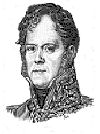
Marshal Ney
Armee de Centre
36,000 infantry
6,720 cavalry
54 artillery
|
BATTLE OF DENNEWITZ
JUNE 27th, 1811
|


General Bagration & General Yorck
Coalition Army
4,800 Prussian infantry
33,120 Russian infantry
7360 cavalry
42 artillery
|
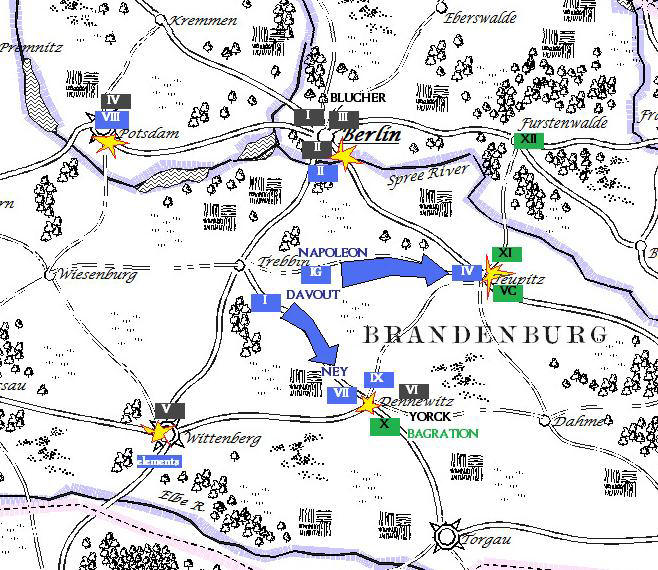
Following the battle of Rehfeld (Torgau), the
French fell back north and west and the Coalition advanced toward Berlin,
seeking to link up with the armies of Blucher who were moving to the capital
from the north. Bagration was generally seeking to get his forces across the
Spree while Yorck was pursuing northwest. He drove Ney back from Dennewitz but
when he pursued on to Trebbin, he was startled to find a hundred thousand French
there. He fell back to Dennewitz with Ney in counter-pursuit. Napoleon, at
Trebbin, was in the process of trying to steal the central position and so while
he pursued south with Ney, he also directed Corps to Teupitz and Berlin, looking
to engage as many enemy forces as possible.
The goal here was to decisively damage a part of
the Coalition armies while pinning another and drive them apart so that they
could not link up. In order to do that, he pulled troops in from everywhere and
even dangerously weakened his forces at the siege of Wittenberg. Once reports
came in from the different battlefields, the French Emperor chose to reinforce
the battles of Dennewitz and Teupitz, while encouraging II Corps at Berlin to
simply engage and withdraw, tying up Blucher's army for the day.
At Dennewitz, Generals Bagration and Yorck knew
that they were likely to be forced to retire, but were determined to make a
fight of it. They selected a battlefield where they could cover the retreat
paths toward Torgau and Dahme. The Russians in particular were hoping to use the
Dahme road if necessary in order to link up with the forces at Teupitz and
Furstenwalde, where the bulk of the Russian armies were. The Coalition forces
did not deploy behind the creek, wishing instead to keep the option open to make
attacks against the oncoming French. The last of Yorck's Prussian artillery had
been lost in the hasty retreat from Trebbin so the right flank of the allies
would be without guns. General Bagration's Russians still maintained a healthy
amount of artillery that would create a formidable wall in the center.
The French IX Corps, it should be noted, was made
up mostly with veteran infantry, under excellent officers. Marshal Ney initially
appeared to refuse his left flank but it seemed to be that this was a ruse to
disguise his true intentions.
A light rain falls that would limit the
effectiveness of musket fire.
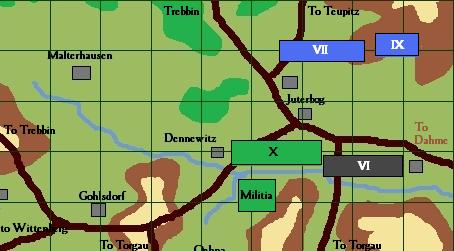
1000 hours: The armies square off to the east of Dennewitz.
Although the Russians initially did not elect to deploy themselves into the town
of Juterbog, their artillery was positioned to punish any French that entered
it.

Quickly, the forces of Ney's left wing caught up
to those of his rightmost Corps. The French were marching forward at an
aggressive pace, primarily against the Prussian Corps. French artillery is not
unlimbered to engage, but rather Marshal Ney will rely upon the energy of his
infantry to shape the battle. Near Juterbog, Russian artillery would fire would
unsettle and disrupt the French advance.
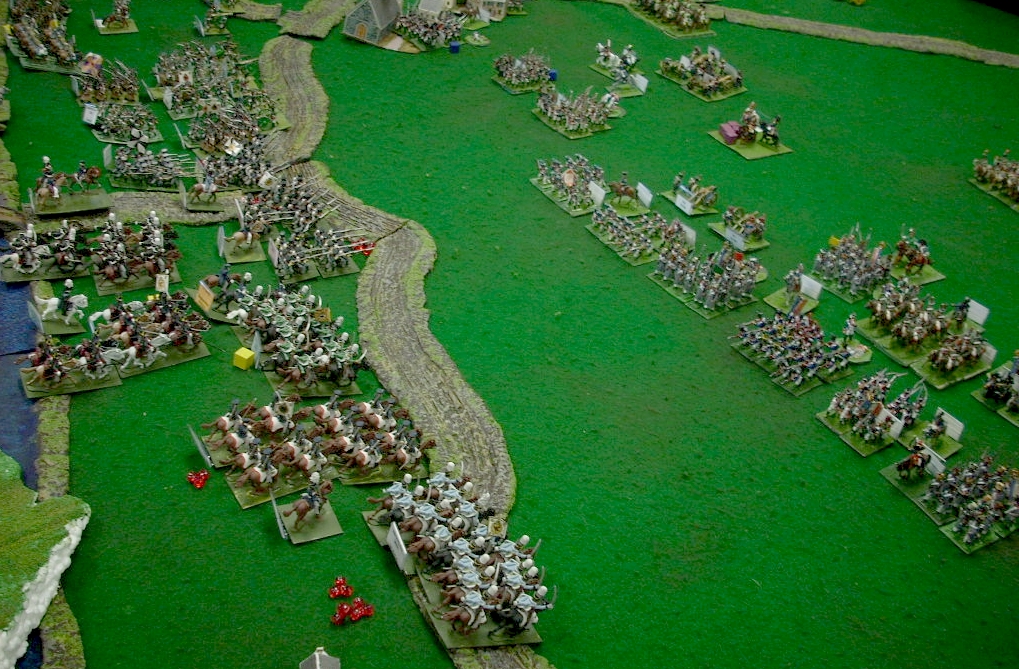
It is only 1030 in the morning and already the
Prussians are rushing forward through the rain to get to grips with French. When
the Russians see this aggression in their allies, they also move forward,
seeking to take advantage of disordered French columns to their front.
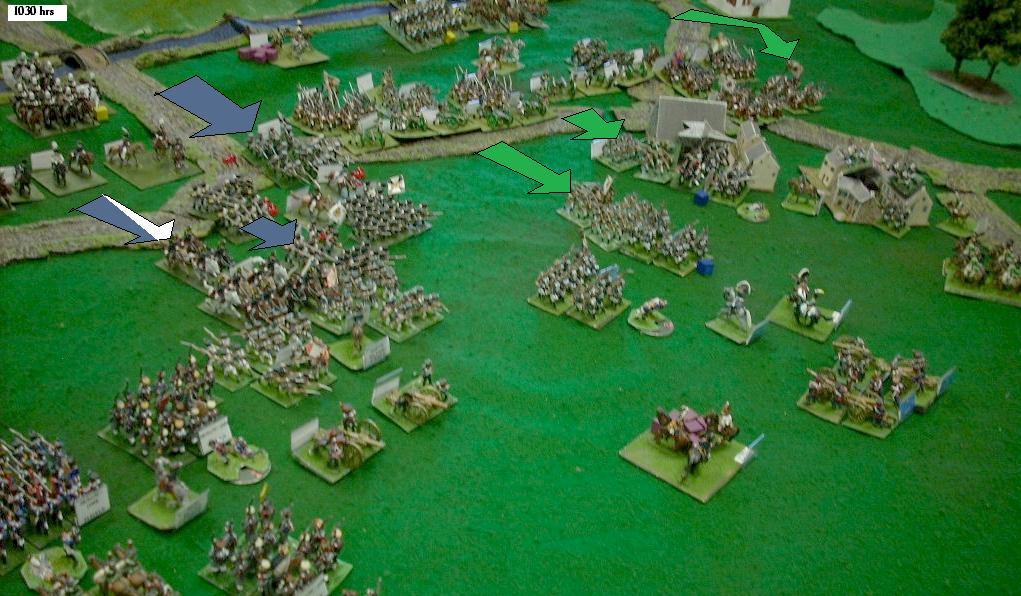
The coalition would enjoy great success in this
advance. Three French fresh brigades would be routed and a gap would appear in
Ney's center. Prussian cavalry would try to follow up these successes with
charges toward the French columns to their front in an effort to force them into
squares, but the veterans would manage to repel the uhlans without too much
trouble.
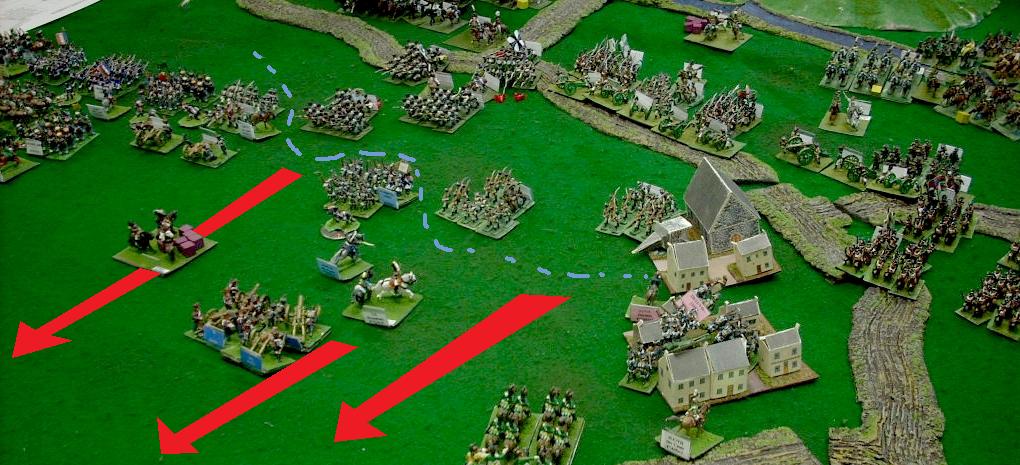
In the early fighting in the center, Marshal Ney
would find himself isolated after leading an infantry charge, and Prussian
infantry would overrun him. Germans laid hands upon his uniform and began to
make a capture but the Marshal fought them off with his sabre and cut his way
free. He would receive violent wounds in the exchange and be required to retire
form the field to have the deep cuts to his face and jaw dressed. He would be
obliged to pass off the running of the battle to a surbordinate.
The Russians brigades that went forward found
themselves out of command and screening their artillery, and so were retreated
back behind the gun line to reorganize. One column was caught in the open and
run down by French Hussars. The Prussian columns found themselves the target of
aggressive French counterattacks. This included advances by the French veteran
infantry into the cavalry recall areas, disrupting the ability of the Uhlans and
Hussars to make their presence felt. Still, a great many of the French
formations spent a good portion of the morning moving into and out of square in
the face of Prussian cavalry charges.
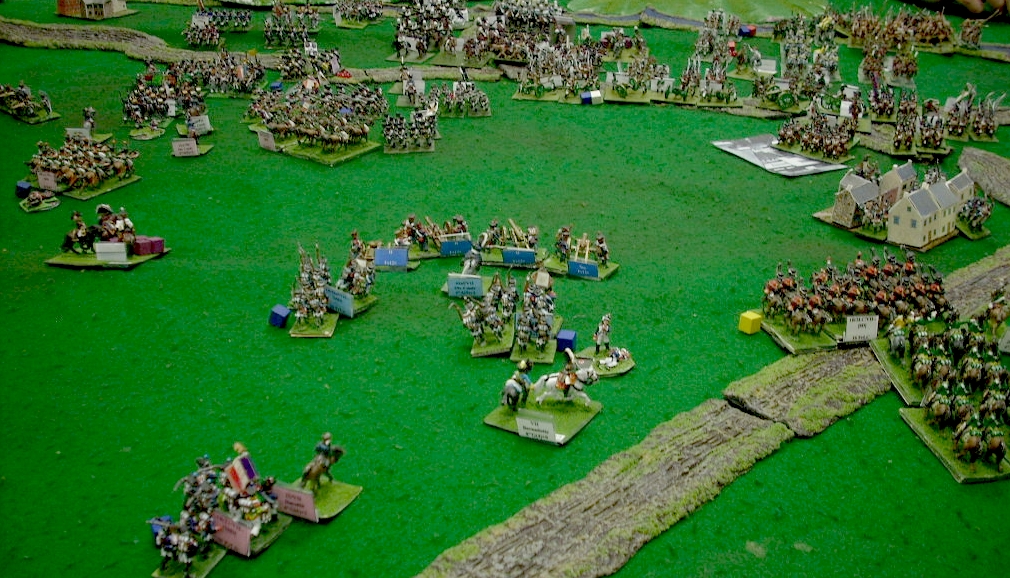
It is still only noon, and the French IX Corps
has advanced as far as the creek and is swinging in. The road to Dahme is now
denied to the Coalition.
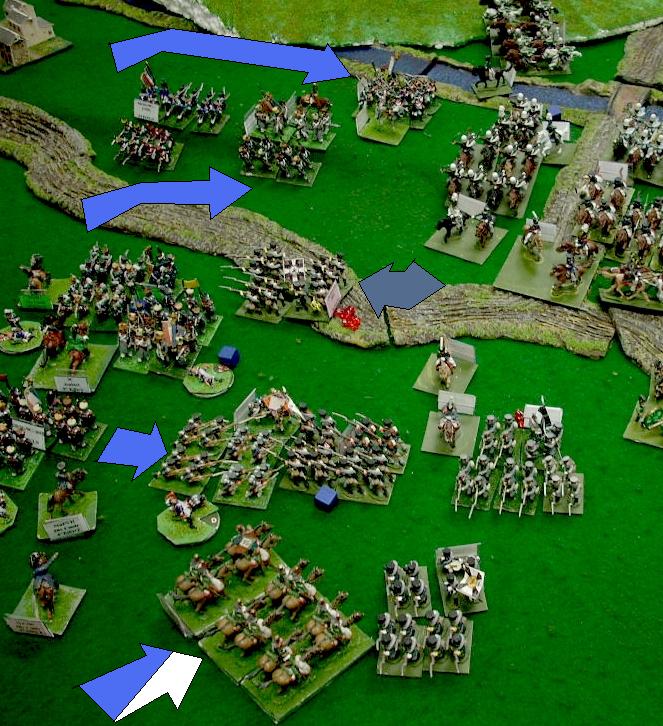
The Russians are alert to the danger as the last
Prussian infantry are sent routing or dispersed from the field. X Corps has
turned to their right but their gun line, hotly engaged by opposing French
artillery, cannot limber up to join in the turn.
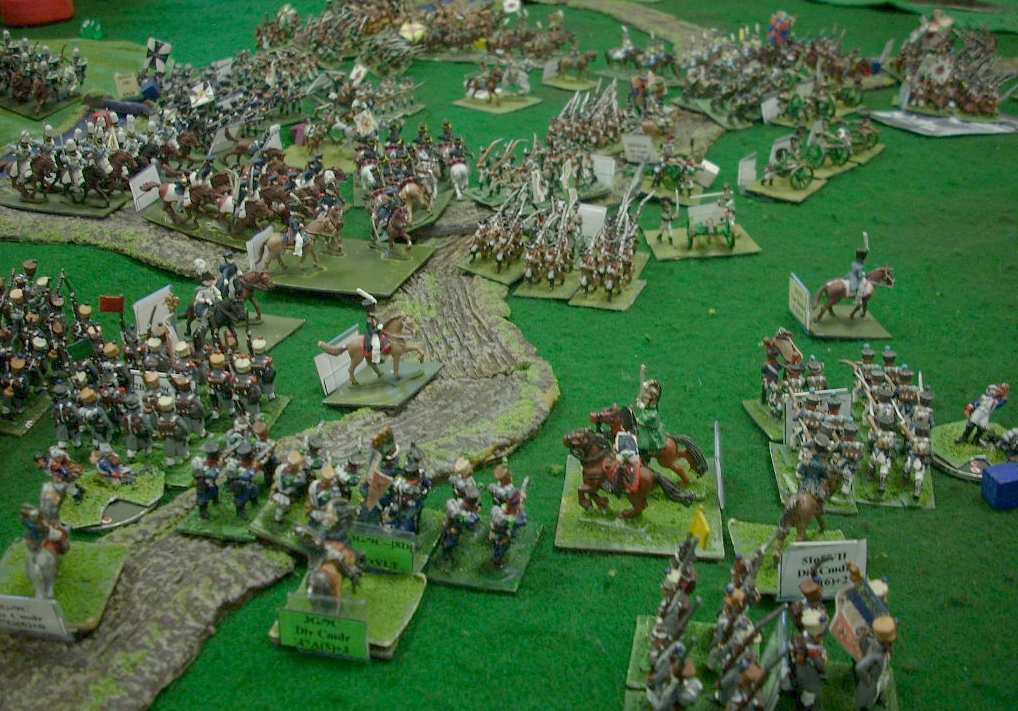
At 1230, French I Corps appears from Trebbin.
While the Russian left wing had been enjoying some success and was looking to
secure the buildings of Juterbog, the presence of I Corps would threaten to put
even the Coalition left flank into danger.
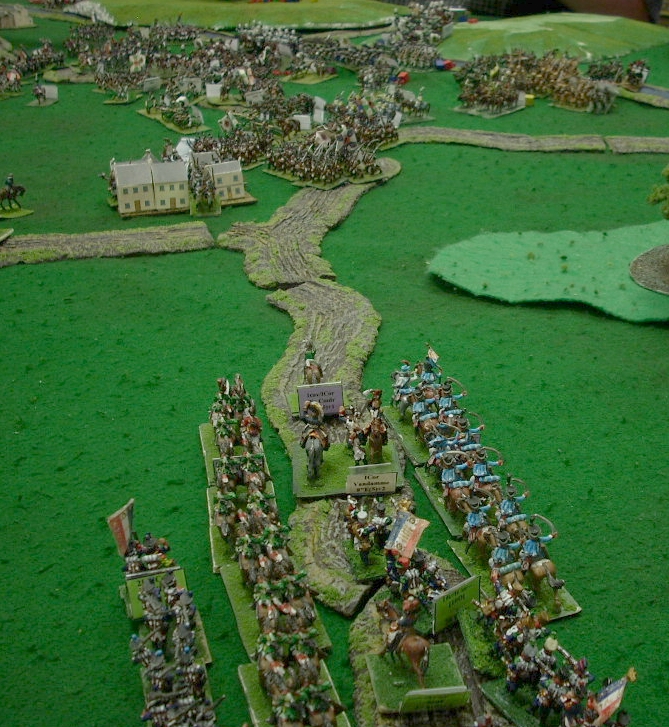
1300 hrs: Russian grenadiers would drive the
French from Juterbog but it is a case of too little, too late. French veteran
infantry are rolling forward through the rally area of the coalition. The
Prussian Corps is shattered and the remnants, fatigued, are pushed across the
creek. The Russians, tied down at Juterbog, anchored by their artillery, and
with no functional reserve other than militia, abandon the battle and order a
general retreat. The only road open to the allies is that to Torgau and they
take it.
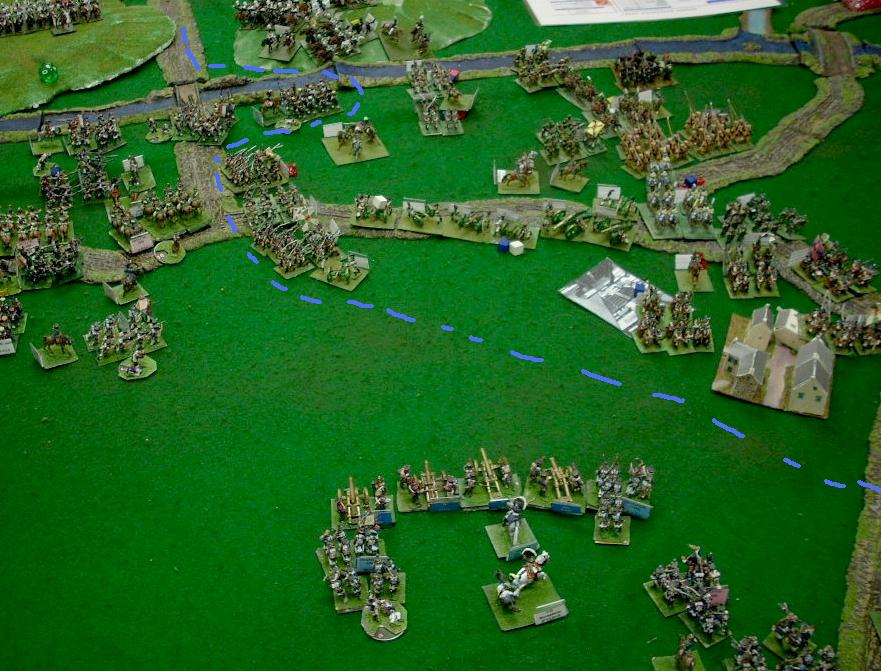
It is a decisive victory for Marshal Ney, despite
his wounds. He does not yet know the results of the battles at Wittenberg and
Teupitz, but he has performed his duty on this day and driven the allies further
from their supports. The Prussian army available to Yorck is broken.
| |
Campaign System Estimated Force |
Battlefield Estimated Force |
Campaign System Estimated Casualties |
Battlefield Estimated Casualties |
| Allies |
42,500 |
50,000 |
10,500 |
12,500 |
| French |
55,000 |
43,000 |
6,500 |
5000 |













